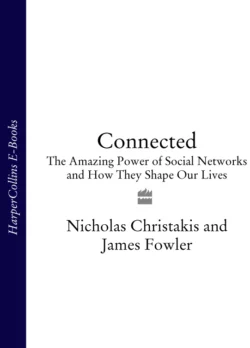Connected: The Amazing Power of Social Networks and How They Shape Our Lives

James Fowler и Nicholas Christakis
Тип: электронная книга
Жанр: Социология
Язык: на английском языке
Стоимость: 229.26 ₽
Статус: В продаже
Издательство: HarperCollins
Дата публикации: 16.04.2024
Отзывы: Пока нет Добавить отзыв
О книге: Based on exciting discoveries in mathematics, genetics, psychology and sociology, ‘Connected’ is an innovative and fascinating exploration of how social networks operate.Think it’s all about who you know? It is. But not the way you think.Turns out your colleague’s husband’s sister can make you fat, even if you don’t know her. And a happy friend is more relevant to your happiness than a bigger income.Our connections – our friends, their friends, and even their friends’ friends – have an astonishing power to influence everything from what we eat to who we sleep with. And we, in turn, influence others. Our actions can change the behaviours, the beliefs, and even the basic health of people we’ve never met.In this brilliantly original and effortlessly engaging exploration of how much we truly influence one another, pre-eminent social scientists Nicholas Christakis and James Fowler explain why obesity is contagious, why the rich get richer, even how we find and choose our partners. Intriguing and entertaining, with revelatory implications for everything from our notion of the individual to ideas about health care policy, “Connected” will change the way you think about every aspect of your life, and how you live it.